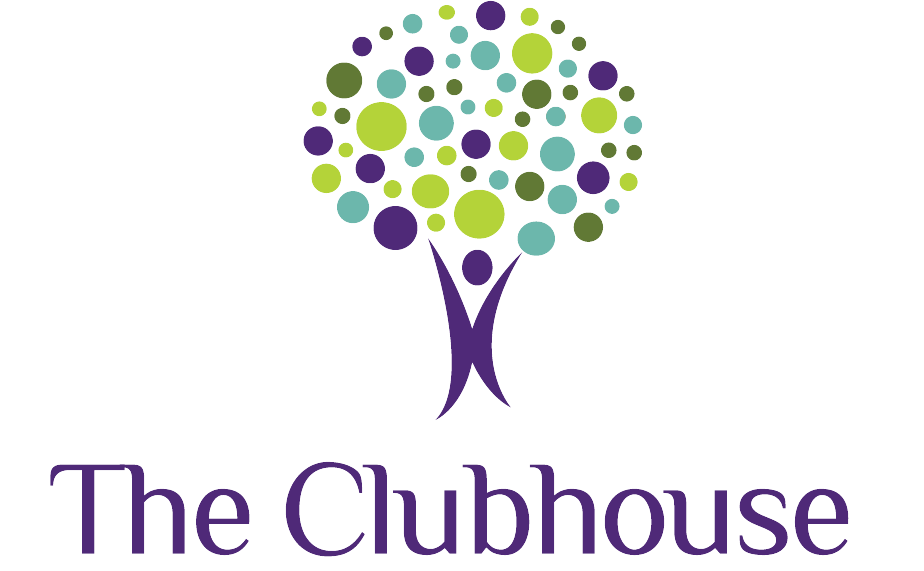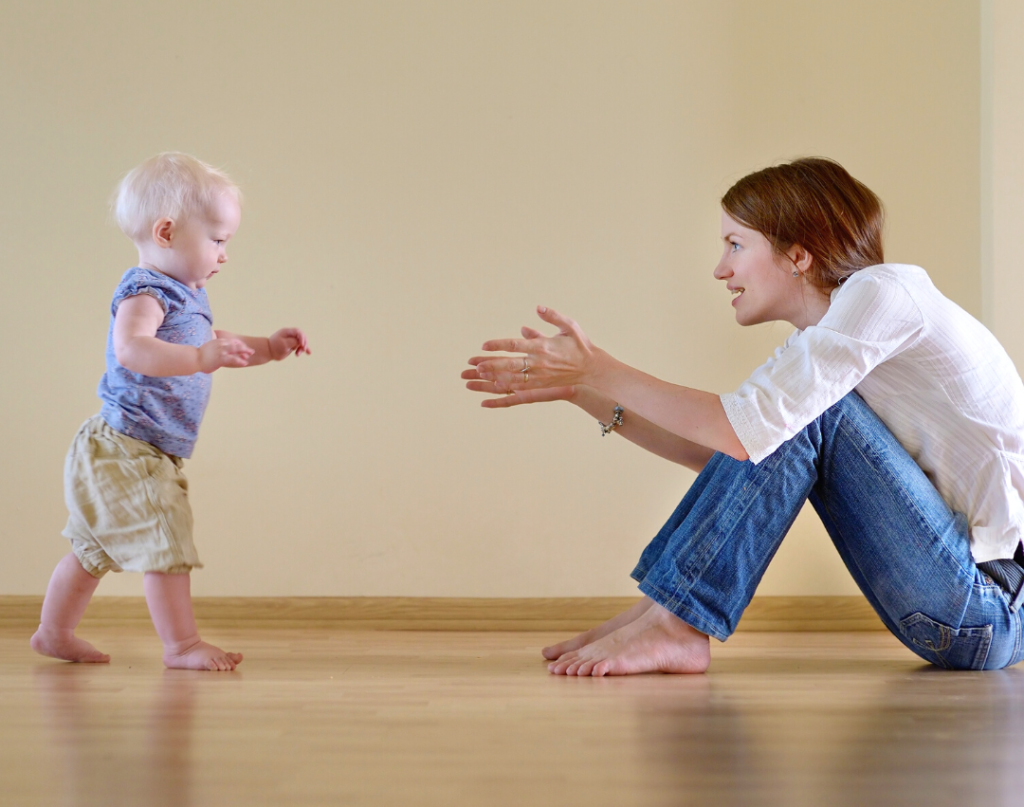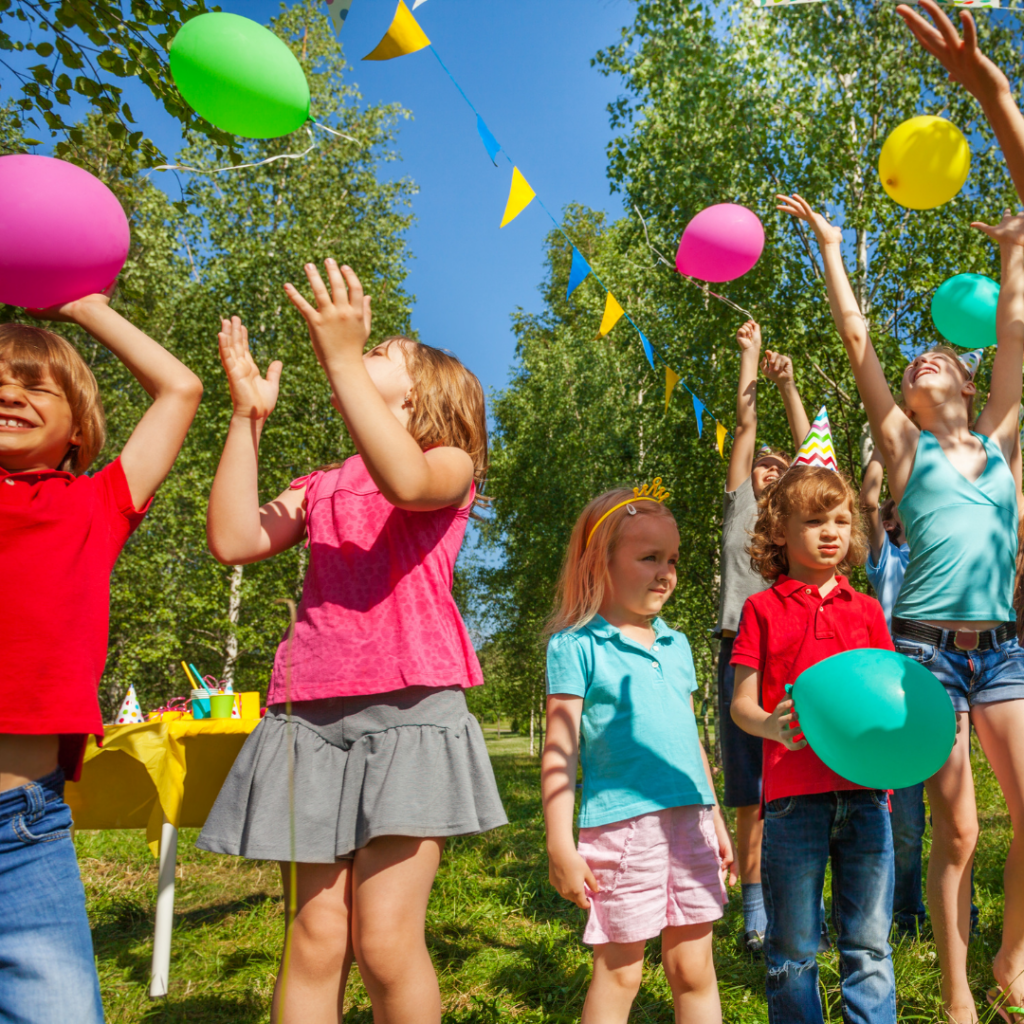Many parents focus heavily on the months leading up to their child’s independent walking, counting down the days until their baby finally masters this skill. When your child finally takes their first independent steps, it’s such an exciting time and you should certainly celebrate this new milestone. Placing a checkmark in the baby book next to “walks independently”, many parents start to shift their focus to other important areas of development: speech and language, fine motor, and pretend play.
While these skills are all equally as important, the gross motor “work” has only just begun! There are a variety of ways to continue supporting your child in their gross motor independence so that they can remain on track for future activities like jumping and stair climbing, which are just around the corner.
Below is a list of activities and ideas to try with your toddler once they have starting taking more steps on their own:
Stepping over a small (~2”) “hurdle”: Tie a jump rope, piece of yarn, or piece of tape from one chair leg to another, approximately 2” off the floor. Have your child practice stepping over the obstacle to reach a toy on the other side. You can place a shape sorter on one side of the obstacle and a pile of shapes on the other side to encourage multiple repetitions. Feel free to hold 1-2 hands as needed to help them be successful, but also try taking a step back and offering only one-finger hold assistance to see what they are capable of. If this feels too easy, have them attempt to step over the hurdle all by themselves.
Take note of what foot they lead with! If you notice that your child always leads with the same side to step over the line, they may have a dominant side, and it’s helpful to also promote stepping over with the opposite side as well for symmetrical balance and strength. This simple game helps your child start to lift their toes toward their shin to strengthen the tops of the ankle and to flex their hip high enough to avoid tripping. Feel free to try this with a pool noodle, a broom handle, the garden hose, etc.
Create sensory bins for barefoot play: These sensory bins are great for intrinsic arch strengthening and to increase tactile input to the soles of the feet. Dry beans, dry rice, water beads, kinetic sand, and marbles are just a few examples of sensory items that can be used to fill the bins. Hold your child’s hands and encourage them to step into and out of a few sensory bins lined up in a row.
In this way, their bare feet gain exposure to a variety of new textures, a nd they can work on balance and coordination. To make this easier, hold both of their hands and allow them to place both feet in each bin. To increase the challenge, only hold one hand, one finger, have them step one foot at a time into each sensory bin, or have them try to step in and out all on their own.
Rolling Play-Doh: Begin by rolling the Play-Doh into a ball and have your toddler work on their balance by lifting their foot to squish the Play-Doh into a pancake. This is great for strengthening the intrinsic “arch muscles” of the feet and working on side to side weight-shifting for early balance practice. Again, hold their hands as needed. For toddlers who tend to mouth toys, try placing the Play-Doh into a plastic Ziploc bag to prevent them from placing it directly into their mouth while still benefiting from the tactile and strengthening benefits.
Squatting for toys while standing on a dynamic (”wobbly”) surface: If your toddler is already able to squat to pick up toys from the floor and return to standing without losing their balance, it’s time to progress this skill by having them work on standing on a less stable surface while squatting for toys.
One easy way to work on this is to have them stand on a pillow or couch cushion placed on the floor, hold toys at or below knee-level (think coins from a piggy bank toy, shapes from a shape sorter, blocks, etc.) and have your child squat to pick up the toys one at a time to place them in the piggy bank, shape sorter, or box. The more reps they can complete without stepping off the pillow, the better. This works the hips, core, and ankles by focusing on stability on an uneven surface.
Walking backwards: Once your child is confident with walking forwards, having them try to walk in other directions can be a great way to work on motor planning, balance, and additional strengthening. Walking backwards especially works the ankle muscles and can further promote a mature use of heel-strike gait pattern.
Kicking a ball or kicking over a tower of blocks: Make sure to practice kicking with left and with right foot for equal weight shifting. Demonstrate kicking a ball forward or kicking over a tower of cups or blocks and then assist your child by using hand-over-leg to teach them how to do it. Make sure to add some silly sound effects!
These are just a few of the many activities that can help your child become stronger and learn to walk more confidently. For more motor exercises, check out our other Physical Therapy blogs here!
Written by Jessica Tarence PT, DPT


